Culvert is a tunnel carrying a stream under a road or railway. A culvert may act as a bridge for traffic to pass on it. They are typically found in a natural flow of water and serves the purpose of a bridge or a current flow controller.
Culverts are available in many and shape like round, elliptical, flat-bottomed, pear-shaped, and box-like constructions. Culverts are by their load and water flow capacities, lifespan and installation of bedding and backfill. The type is based on a number of factors including hydraulic, upstream elevation, and roadway height and other conditions.
Following are the different types of Culvert:
- Pipe culvert (single or multiple)
- Pipe-Arch culvert (single or multiple)
- Box culvert (single or multiple)
- Arch culvert
- Bridge culvert
- Metal box culvert
Pipe Culvert
Pipe culverts are the most common types of culverts due to competitive price and easy installation. They are found in different shapes such as circular, elliptical and pipe arch. Generally, their shapes depend on site conditions and constraints. Pipe culverts on a small scale represent normal pipes like concrete pipes.
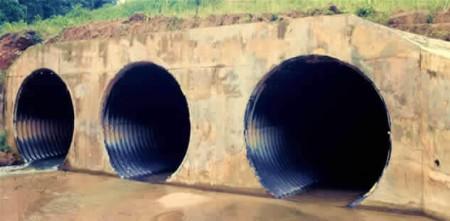
Advantages of Pipe Culvert
The main features of pipe culverts are:
- It can be constructed of any desired strength by proper mix design, thickness, and reinforcement.
- They are economical.
- These pipes can withhold any tensile stresses and compressive stresses.
- The crossing of water is under the structure.
Disadvantages of Pipe Culvert
The main disadvantage of pipe culvert is that it can be easily corroded at the crown because of bacteria‘s organic matter and release of harmful gas, which is known as Crown corrosion.
{adselite}
Pipe-Arch Culvert (Single or Multiple)
Arch culverts are suitable for large waterway opening where fishes can be provided with a greater hydraulic advantage. Moreover, they provide low clearance and are definitely, much artistic. Pipe arches are particularly useful for sites where headroom is limited and also have a hydraulic advantage at low flows.
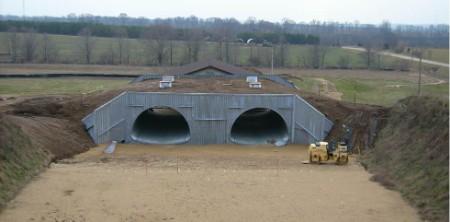
Advantages of Pipe-Arch Culvert
The features of pipe arch culverts are:
- Limited headroom condition
- Improved hydraulic capacity at a low flow
- Aesthetic shape and appearance
- Lightweight
- Easy to install
Box Culvert
Box culverts are made up of concrete and especially, RCC (Reinforced Concrete). The most challenging part in constructing a box culvert is that dry surface is needed for installing it. However, due to the strength of the concrete floor, water direction can be changed when a large amount of water is expected. This feature makes box culverts, one of the most commonly found types of the culvert.
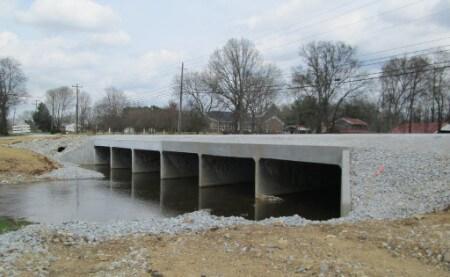
Advantages of Box Culvert
Box Culverts are economical for the reasons mentioned below:
- The box culvert is a rigid frame structure and very simple in construction
- It is Suitable for non-perennial streams where scrub depth is not significant but the soil is weak.
- The bottom slab of the box culvert reduces pressure on the soil.
- Box culverts are economical due to their rigidity and monolithic action and separate foundations are not required.
- It is used in special cases, weak foundation.
Arch Culvert
An arch culvert is made up of metal, stone masonry, concrete, RCC etc. Construction does not take a lot of time and unlike box culvert, water diversion is not necessary, as it can be installed without disturbing the water current. Thus, it can be termed as a Low Profile Culvert. This type of culvert maintains the natural integrity of the wash bed.
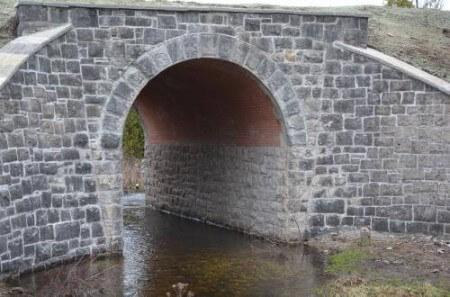
Advantages of Arch Culvert
The advantages of using arch culverts over traditional box culverts and pipe culverts are as follows:
- Cost savings
- Accelerated construction schedule
- Greater hydraulic efficiency
- Pleasing aesthetics
- Design-build advantage
Bridge Culvert
Bridge culverts serve a dual purpose. It acts both as a bridge and a culvert. Generally, rectangular in shape, bridge culverts are constructed on rivers and canals. A foundation is laid under the ground level and pavement surface is laid on top of the series of culverts. Generally, we can term it as a Multi-Purpose culvert.
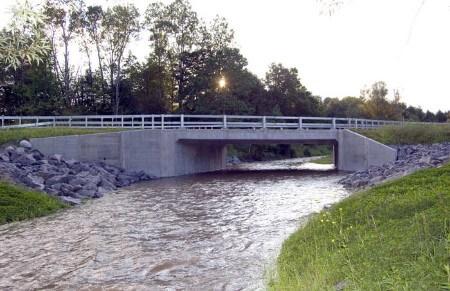
Advantages of Bridge Culvert
Following are the main features of bridge culvert:
- Extension of the network by acting as a repeater
- Very strong
- Allows traffic to pass on it
- Highly strong foundation
- Most expensive river crossings
Metal Box Culvert
The metal box culvert is the economic alternative of the bridge. These bridges are manufactured from a standard structural plate or deep-corrugated structural plate. They are the perfect bridge replacement maintaining the same road grade level.
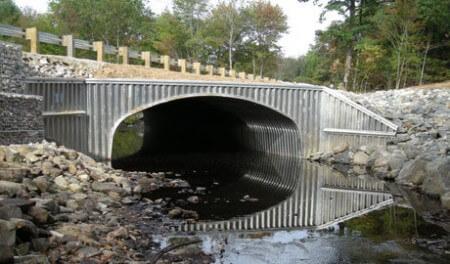
Advantages of Metal Box Culvert
The advantages are as follows:
- Durability
- Shorter construction period and easy installation
- Deformation ability
- Long service life

